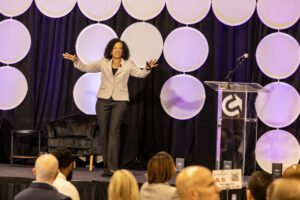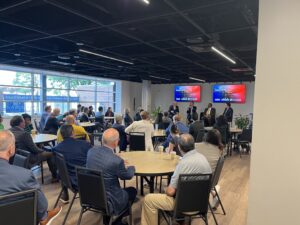Greg Laudeman, Ed.D
Everyone who works is part of the workforce, from the corner office to the front line. Workforce planning impacts every one of us. It can determine our coworkers, our job, our pay and even whether or not our employers thrive. Everyone knows that “people are our most valuable resource.” Therefore, it makes sense to plan for them — and with them. Which means we should all do workforce planning, right?
Planning allows us avoid problems, position for growth and prepare for issues and opportunities. Not having a plan means things don’t get done, processes break down, opportunities are missed and customers get annoyed. For example, when demand for a major local company's service dropped a few years ago, they laid off numerous employees but took advantage of the lull to make major investments in new production technology. When they began working to rehire people after the market picked back up, they couldn't find anyone who knew how to run their new machines. Many organizations deal with similar problems on a regular basis, and they face massive costs for finding, hiring and retaining employees, yet still don’t do workforce planning.
Gathering and sharing information is an essential part of planning. Plans are only as good as the information people provide. Once completed, plans are only useful if they are shared with those who are to implement the plans. Sharing is especially important for workforce planning because it’s planning for employers—and their people. You find better ways to work by engaging your workforce. Everyone gets to know the work better, and feels better about it.
So, do you do workforce planning? Probably not. (If you do, we want to know.)
Planning can be difficult, especially when it involves others, and workforce planning involves most everyone. Even major corporations can find it challenging to do workforce planning. A major insurance company recently analyzed the jobs in one department. It took a team of three people six months and was outdated as soon as they were finished. A good workforce plan must be flexible and easy to update.
It's no wonder that workforce planning is usually done by government and nonprofit agencies, not employers. These agencies gather data and input from employers, but the employers don't actually produce their own workforce plans as part of the process. Few employers are actively involved, and many aren’t even really sure what workforce planning is.
What is workforce planning, anyway? Of course, you know, but let’s define it so everyone else is up to speed: Workforce planning is the process of identifying current and future work elements and requirements of jobs, including the number of employees, and establishing means to meet those requirements. You figure out what you need to do to succeed, whether you can do it all, and look for what you don’t have. Simple!
The key to effective workforce planning is involving those closest to the work. Everyone knows a little. No one has the whole picture. Those who do any given job often have different ideas about the activities, tasks, tools, technologies and values (the “work elements”) involved than do managers, executives and customers. Perspectives on the best abilities, interests, knowledge, skills and styles for a job can be even more varied. The number of persons or amount of time required to do a job can be a source of disagreement and uncertainty.
An inclusive process makes plans better, more accurate, impactful and practical. Inclusion can complexify the process. To simplify workforce planning, make the process clear and more accessible. Break the process down into clear chunks. Provide easy-to-use tools for people to give input to and feedback on the plan. The challenge is that the topic is inherently complex. When an IT support company attempted to do workforce planning with spreadsheets, the files multiplied. Many participants tweaked the files, making it difficult to aggregate and analyze the data.
A good workforce plan gets everyone on the same page, aware of and in agreement about required abilities and capacity. Combinations of the two—capabilities—are really what workforce planning is all about. A workforce plan lets everyone know what capabilities are needed when and where. You have to capture input, aggregate it and feed the analysis back to contributors. Then everyone must act in a coordinated manner to implement those plans, so you need to track progress and adjust the plan accordingly. Easy, right?
Does your organization do workforce planning? How do you do it? Do you actively involve other personnel? If so, how?
We want to hear from you. Email [email protected] about workforce planning: how you do it, how it works and what else you would like to know. Future articles will answer your questions, feature your insights and provide practical guidance for effective workforce planning.








